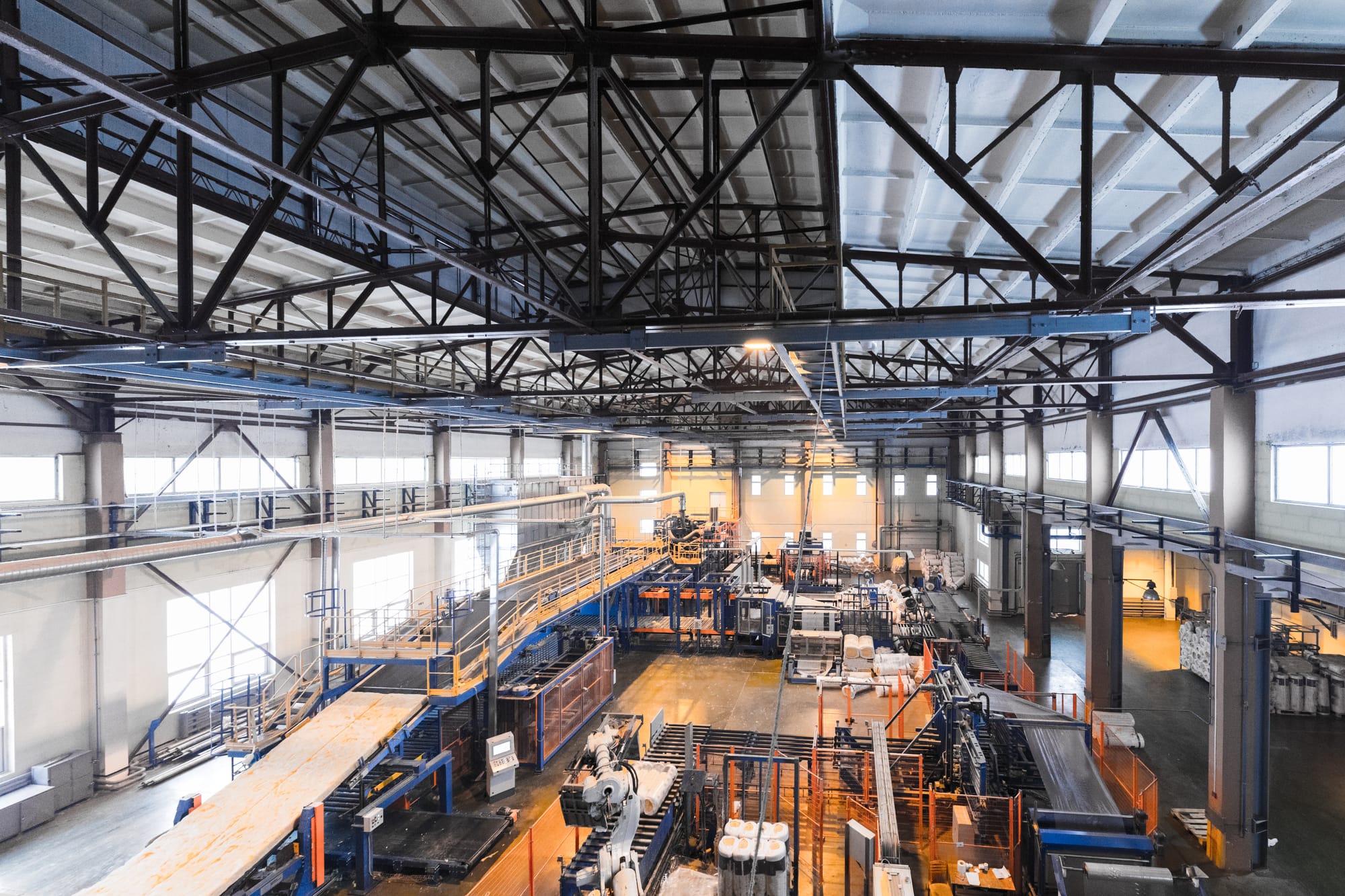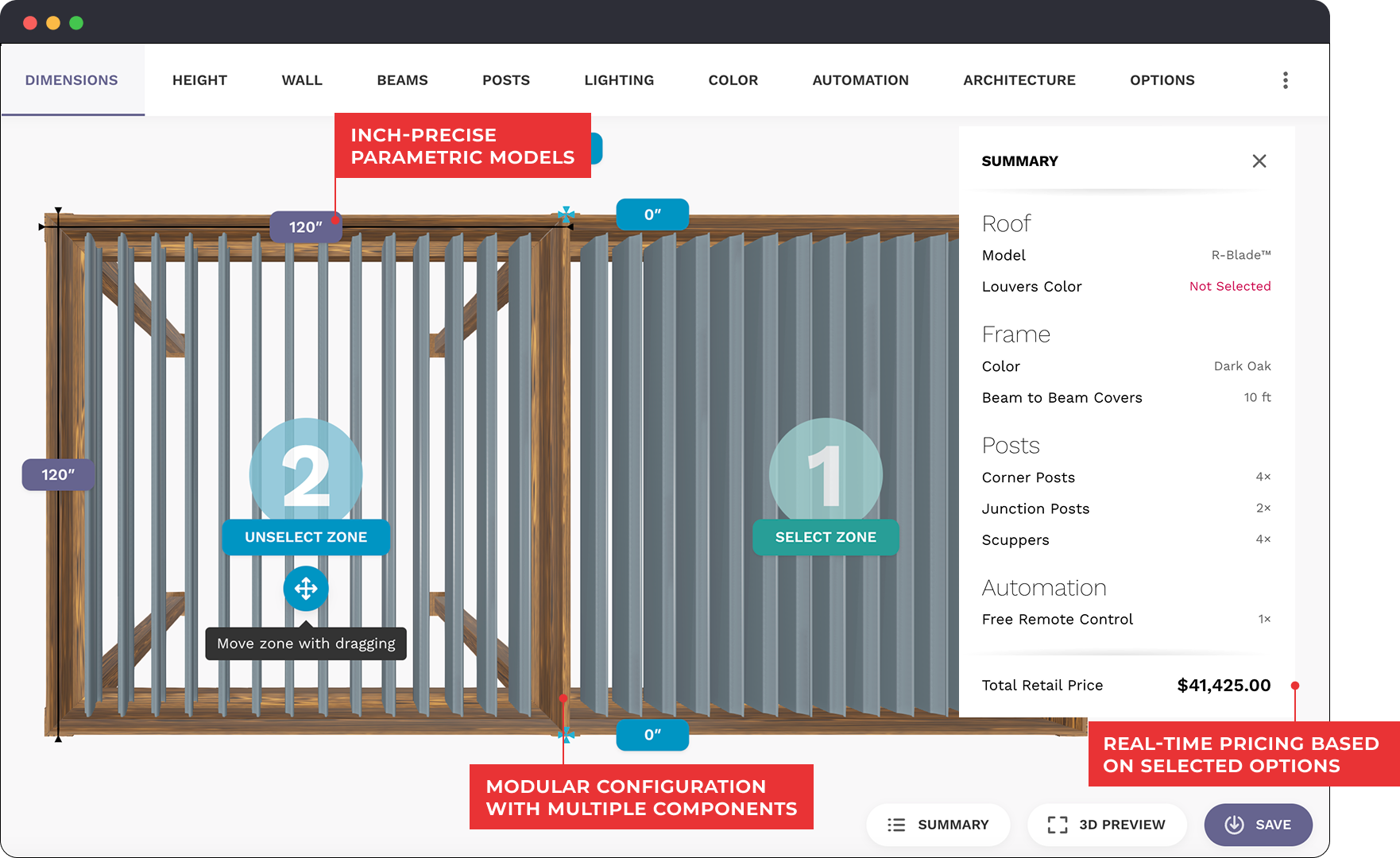8 Key B2B Manufacturing Trends of 2026 & How to Leverage Them
Discover the 8 biggest B2B manufacturing trends shaping 2026, from AI-driven supplier research and smart factories to modular design and digital self-service. Learn how manufacturers can stay competitive through automation, sustainability, and data-driven processes.

The B2B manufacturing market is steady, but expectations are shifting. Buyers are relying on AI to research suppliers, expecting faster responses, and prioritizing manufacturers who can combine flexibility with precision. Success now depends on how well companies connect efficiency, visibility, and value.
To stay competitive in 2026, B2B manufacturers need to better link design, production, and sales. This means offering clearer information online, and proving reliability through real data. The strongest players will be those who invest in automation, modular design, and sustainable operations. All while adapting to how buyers now find and evaluate suppliers.
Below are the eight key trends shaping B2B manufacturing in 2026. And how to use them to strengthen your strategy.
👉 Want the short version? You can skip straight to the roadmap at the end of the article.
1 - AI Is Changing How B2B Buyers Find You
AI is reshaping how businesses search for partners. According to Responsive, 80% of global B2B buyers use generative AI as much as traditional search when looking for partners. While this shift started in digital sectors, it’s quickly spreading across B2B manufacturing. Procurement teams use AI to compare capabilities, pricing, and reliability before ever contacting sales.
This means that the way manufacturers are discovered is no longer controlled by keywords or sales outreach alone. AI engines scan, summarize, and rank companies based on clarity, consistency, and the quality of publicly available information. The clearer your value proposition and technical information, the more likely you are to appear in those AI-generated shortlists.
Why This Matters
AI isn’t just influencing buyers. It’s curating their options. If your website data isn’t AI-ready, you risk disappearing from the shortlist before the conversation even begins.
How Manufacturers Should Leverage It
Make sure your offering is clearly described and easy to understand. Use schema markup and structured data so AI engines can read and rank your content. Publish clear details about your product lines, materials, and custom options, along with FAQ-style content that AI can quote directly.
2 - Market Stabilizes, Competition Tightens
Global manufacturing is expected to rise at a moderate pace over the next few years. The market is projected to reach USD 20.76 trillion by 2031, growing at a compound annual rate of 4.9%. This steady growth suggests the market is maturing. B2B manufacturers can no longer rely on expansion alone to increase revenue.
This means competing in a stable but crowded market. Buyers are comparing suppliers more carefully, expecting transparent information, and looking for proven reliability. Companies that use automation and data will be better positioned to win repeat business.
Why This Matters
When market growth slows, competition increases. Manufacturers who run leaner operations and communicate value clearly are more likely to maintain healthy margins.
How Manufacturers Should Leverage It
Review your pricing, sourcing, and production models to identify areas for improvement. Strengthen how you present value to buyers, showing efficiency gains or measurable cost savings. Invest in technology that supports faster quoting and consistent delivery.
3 - Custom Manufacturing is What Buyers Expect
Customization is becoming an expectation for B2B buyers across industries. According to Adobe, 72% of business customers expect fully or mostly personalized experiences when buying products or services. This shows that tailored solutions are a standard part of how manufacturers compete.
In industrial or construction settings, companies want solutions that align with their brand standards, meet safety codes, or integrate seamlessly with existing systems. Customization plays a central role in purchasing decisions.
Why This Matters
Custom manufacturing increases buyer satisfaction, supports stronger margins, and reduces rework or mismatched specifications. It also creates a closer business relationship by involving buyers in the decision-making process.
How Manufacturers Should Leverage It
B2B manufacturers should design product lines that allow flexible choices in size, material, and configuration without adding complexity to production. To bring this flexibility to buyers, they can use manufacturing product configurators that let them personalize products in real time, visualize their options, and choose what best fits their needs.

4 - Reshoring and Nearshoring Continue to Grow
After years of supply chain disruption, manufacturers are rethinking where production happens. Rising transport costs, tariffs, and stricter sustainability goals are all pushing production closer to home. Instead of a single global footprint, many companies are splitting tasks by region to protect delivery and quality while keeping costs in check.
In a 2025 survey, 43% of contract manufacturers said they have already reshored work for customers or are actively executing reshoring orders, with another 16% currently quoting reshoring projects. For B2B businesses selling modular or custom products, proximity helps with small batches, changeovers, and site-specific requirements.
Why This Matters
Bringing production closer to your main markets reduces risk, builds resilience, and gives buyers more confidence in your ability to deliver consistently.
How Manufacturers Should Leverage It
Give customers something competitors cannot match by taking advantage of your location. Identify which parts of production benefit from local control, such as assembly, testing, or material sourcing, and use that proximity to offer faster support, custom options, and more transparent collaboration.
5 - Modular Manufacturing is the New Standard
Modular manufacturing has moved from a niche concept to a core production strategy. Instead of redesigning products from the ground up, manufacturers are developing systems built around reusable components that can be configured in different ways. A recent research found that modular designs help companies reduce production costs, lower waste, and shorten development times by standardizing shared elements across product lines.
For B2B manufacturers, modular production offers a practical balance between efficiency and flexibility. It allows teams to handle more product variations without increasing complexity, making it easier to respond to client requests or adapt to new regulations. This approach is especially valuable in industries like construction materials, packaging, or industrial equipment.
Why This Matters
Modular production gives manufacturers greater control over both time and cost. It simplifies customization, makes product updates easier, and helps companies deliver reliable results even as demand shifts.
How Manufacturers Should Leverage It
Build your product range around a modular foundation that allows for variation without reinventing the process each time. Use a manufacturing configurator to help buyers visualize combinations of modules, materials, and layouts.

6 - Digital Self Service Takes Over B2B Sales
B2B buyers are bringing the same expectations they have as consumers into their professional purchases. They want to research, compare, and evaluate products on their own without waiting for a salesperson to reply. A 2025 Gartner study found that 61% of B2B buyers prefer a rep free buying experience, showing how fast the line between B2B and B2C buyer behavior is blurring.
For manufacturers, that means a buyer’s first impression happens online long before any call or meeting. They expect clear, straightforward information that helps them understand what you offer and how it fits their needs. Companies that make this process intuitive and transparent are already seeing more engagement because they match how they naturally want to buy.
Why This Matters
B2B buyers no longer separate their work expectations from their personal shopping habits. If your online experience feels outdated or incomplete, they will move on to a supplier that feels easier to work with.
How Manufacturers Should Leverage It
Make it effortless for potential buyers to explore your products. Adding a manufacturing product configurator can help buyers visualize options, understand possibilities and pricing, and feel confident before contacting your team.
7 - Sustainability Gets Real for B2B
Sustainability is no longer just a nice message on a company website. It’s becoming a core part of how manufacturers plan, produce, and win business. According to Make UK, 83% of manufacturers say they’re very or fairly likely to adopt green technologies within the next five years. The shift is driven by changing regulations, energy costs, and growing pressure from buyers who want proof of low-impact production.
For B2B manufacturers, the opportunity goes beyond compliance. Using recycled materials, improving energy efficiency can lower costs and appeal to environmentally conscious bueyrs. Companies that approach sustainability as an ongoing practice rather than a marketing claim are building trust and staying ahead of new requirements.
Why This Matters
Sustainability is fast becoming part of every purchasing decision. Manufacturers that can show real progress are more likely to make the shortlist when buyers compare suppliers.
How Manufacturers Should Leverage It
Track your energy use, waste, and sourcing more closely. Publish simple, measurable updates about improvements you’ve made. Buyers want transparency and evidence that you’re moving in the right direction.
8- Smart Manufacturing Becomes the New Standard
Manufacturers are entering a smarter era of production. According to Deloitte, 83% of surveyed manufacturers say smart factory solutions are already transforming their operations, with data integration and real-time analytics leading the way. Instead of focusing on isolated automation, companies are connecting design, supply chain, and production into one intelligent system that improves coordination and decision-making.
For B2B manufacturers, this shift means more than just efficiency. Smart manufacturing enables teams to manage higher product variety and tighter delivery expectations with precision. By using sensors, analytics, and digital twins, manufacturers can predict maintenance needs, track quality continuously, and adjust production plans instantly.
Why This Matters
Smart manufacturing creates visibility across every step of production, allowing teams to make faster, more informed decisions that build long-term reliability and trust with buyers.
How Manufacturers Should Leverage It
Start by connecting the systems that already exist. Link design, procurement, and production data so information flows seamlessly between teams. Use real-time dashboards to monitor key processes and identify areas for improvement. Over time, these small connections build a smarter, more adaptive operation ready for future growth.
Wrapping Up
Manufacturing is moving toward greater integration between technology, transparency, and buyer expectations. Procurement teams want proof of capability, faster quoting, and less friction in every stage of collaboration. These changes are reshaping how manufacturers compete and how value is defined.
The trends point to the same outcome. The advantage will go to companies that use data and digital systems to stay efficient, adaptable, and visible. The most resilient manufacturers in 2026 will connect automation, modularity, and sustainability to deliver reliable results in a slower but more demanding market.
To make these trends actionable, you’ll find the roadmap below. It highlights where to focus, what to improve, and which capabilities will help you stay ahead this year.
B2B Manufacturing Roadmap 2026
Use this roadmap as a practical summary to guide product, process, and marketing decisions this year.


